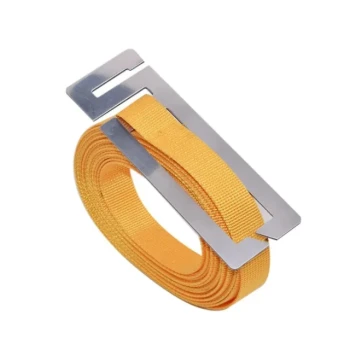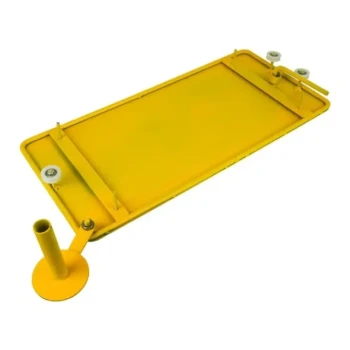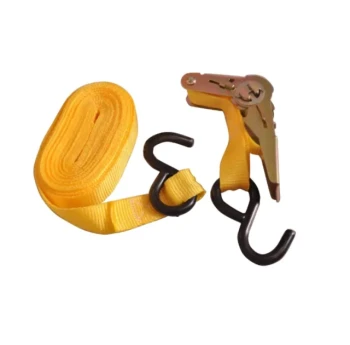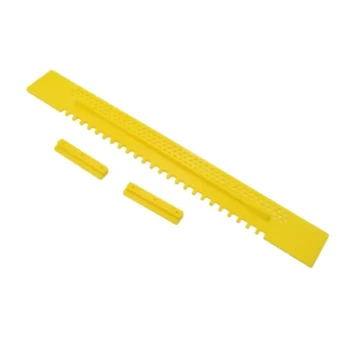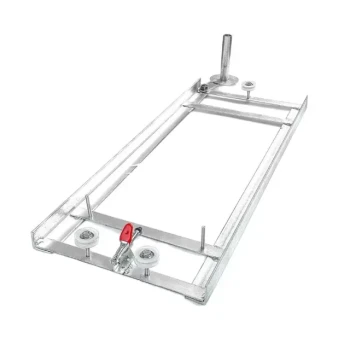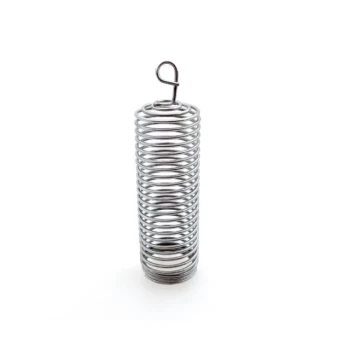Choosing your first beehive is a foundational decision that will shape your entire beekeeping experience. For most beginners, the Langstroth hive is the recommended starting point due to its widespread use, availability of standardized equipment, and vast community support. However, the "best" hive is the one that aligns with your specific goals, budget, and physical capabilities.
While the Langstroth is the default choice for its versatility and robust support network, the truly "best" hive for a beginner is the one that matches their personal goals—whether that's maximizing honey, practicing natural methods, or minimizing heavy lifting.
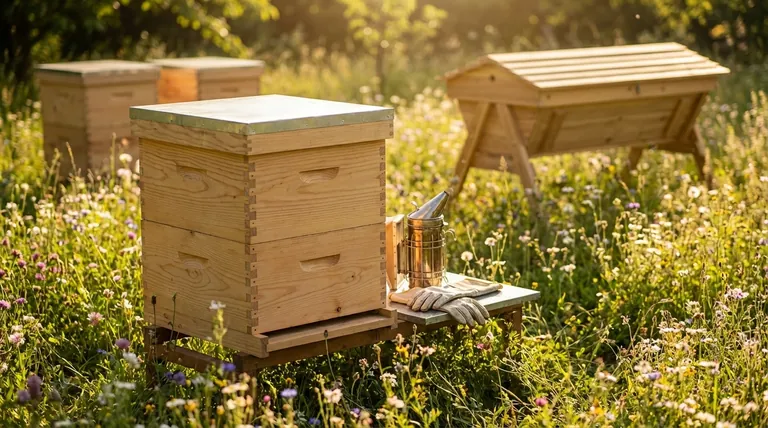
Why the Langstroth is the Standard Starting Point
The Langstroth hive's popularity is not accidental. It is a highly practical and well-supported system that has become the industry standard for clear reasons.
Unmatched Support and Resources
Because the Langstroth is the most common hive, you will find an abundance of books, online guides, and local mentors familiar with its management. This access to knowledge is invaluable when you are just starting out.
Finding standardized equipment, from frames to boxes to feeders, is simple and often more affordable due to mass production.
Designed for Honey Production
The Langstroth hive is engineered for efficient honey production. Its design with removable frames allows you to inspect the colony with minimal disruption.
Crucially, honey can be extracted from the frames while leaving the beeswax comb intact. This allows the bees to refill it immediately, saving them enormous energy and resulting in a larger honey harvest.
Exploring the Alternatives: Top Bar and Flow Hives
While the Langstroth is the standard, other hives cater to different philosophies and priorities in beekeeping.
The Top Bar Hive: For Natural Beekeeping
A Top Bar hive is an excellent choice for hobbyists interested in a more "natural" approach to beekeeping and who wish to avoid heavy lifting. Bees build their comb naturally from a simple top bar without foundation.
This hive style is low-cost, especially if you build it yourself, and does not require expensive extraction equipment. Management is simpler, as you only lift one bar at a time rather than heavy boxes.
The Flow Hive: For Ultimate Harvesting Convenience
The Flow Hive is fundamentally a Langstroth hive equipped with a revolutionary honey extraction system. Its main benefit is the ability to harvest honey directly from the hive by turning a key, without opening it.
This technology significantly lowers the barrier to entry for the harvesting part of beekeeping. However, it represents a higher initial investment and still requires all the same colony management skills as a standard Langstroth.
Understanding the Core Trade-offs
Choosing a hive involves balancing competing priorities. Understanding these trade-offs is key to avoiding frustration later on.
Honey Production vs. Natural Process
The Langstroth is optimized for high-yield honey harvests by reusing comb. The Top Bar hive prioritizes a more natural process where bees build fresh comb each time, which yields more beeswax but typically less honey.
Physical Effort and Weight
A standard Langstroth hive requires lifting heavy boxes (supers) that can weigh 50 pounds or more. The Top Bar hive is managed one frame at a time, eliminating the need for heavy lifting.
Initial Cost and Complexity
Langstroth hives offer a moderate and predictable entry cost. Top Bar hives are the most affordable, especially for DIY enthusiasts. Flow Hives represent the highest initial investment due to their specialized extraction technology.
The Importance of Your Local Climate
Your local climate is a critical factor. For instance, hives with screened bottom boards can provide better ventilation in humid, wet climates, while solid bottoms may be preferable in very dry areas.
Always consult with local beekeepers to learn which hive styles and configurations perform best in your specific region.
Making the Right Choice for Your Goal
Your primary motivation for keeping bees should be the deciding factor in your choice of hive.
- If your primary focus is maximizing honey and accessing community support: The Langstroth hive is the most direct path to success.
- If your primary focus is natural beekeeping and avoiding heavy lifting: The Top Bar hive is an ideal and cost-effective choice.
- If your primary focus is the easiest possible honey harvesting with a higher budget: The Flow Hive offers unparalleled convenience for this specific task.
Understanding these core differences empowers you to select a hive that will support your unique beekeeping journey from the very start.
Summary Table:
| Hive Type | Best For | Key Advantage | Key Consideration |
|---|---|---|---|
| Langstroth | Maximizing honey & community support | Industry standard, abundant resources | Requires lifting heavy boxes (up to 50+ lbs) |
| Top Bar | Natural beekeeping & low physical effort | Low-cost, bees build natural comb | Typically yields less honey than Langstroth |
| Flow Hive | Easiest honey harvesting | Harvest honey by turning a key, no hive opening | Highest initial investment, requires standard management skills |
Ready to Start Your Beekeeping Journey?
Choosing the right hive is your first step toward a successful apiary. At HONESTBEE, we supply commercial apiaries and beekeeping equipment distributors with the high-quality, durable supplies they need to thrive.
Whether you're starting with Langstroth, Top Bar, or Flow Hives, we provide the essential equipment for a strong foundation. Let's build your success together.
Contact our wholesale experts today to discuss your needs!
Visual Guide
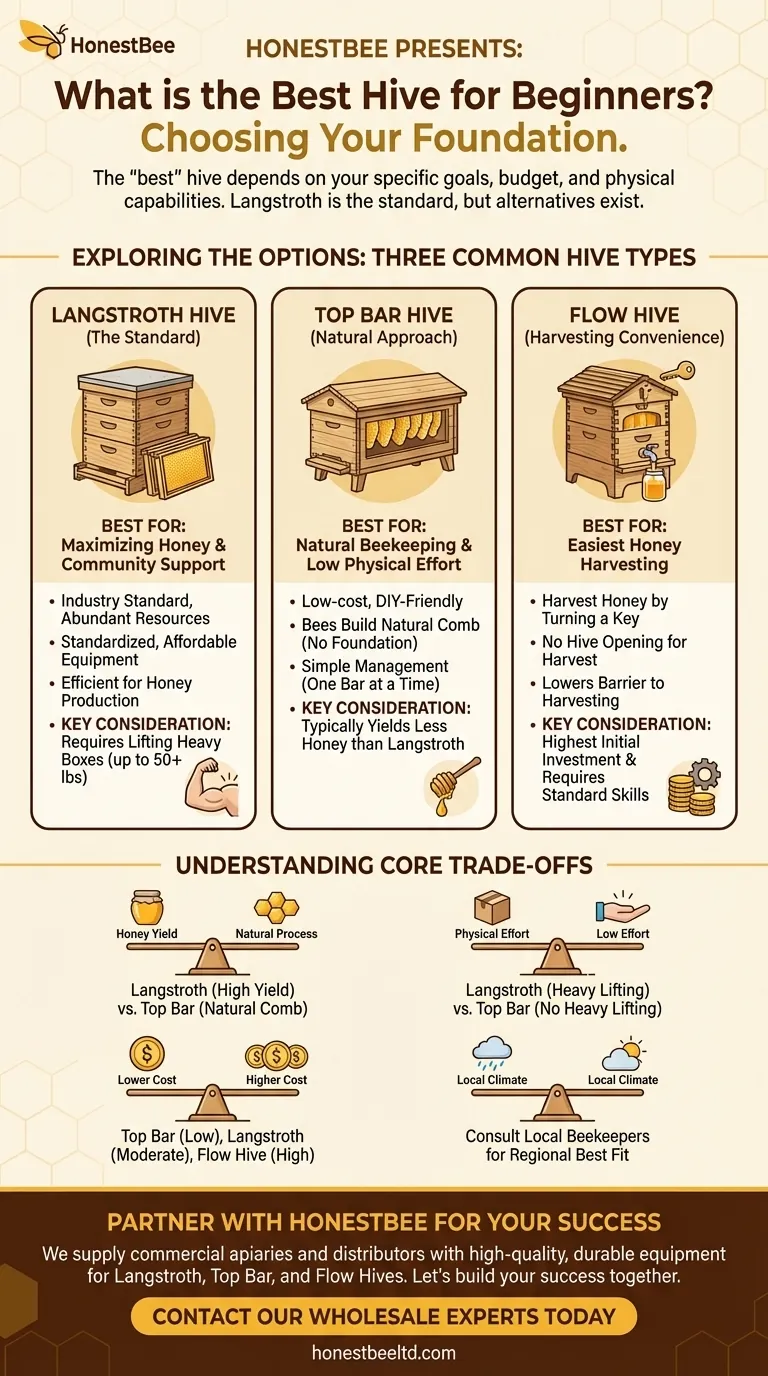
Related Products
- Australian Langstroth Beehive Boxes for Beekeeping Wholesales
- Langstroth Honey Bee Box Hive Boxes for Different Depths
- Professional Galvanized Hive Strap with Secure Locking Buckle for Beekeeping
- Nicot Queen Rearing Kit for Beekeeping and Grafting in Nicot System
- Australian Pine Wood Langstroth Screen Bottom Board for Wholesale
People Also Ask
- What are the sizes of supers available in a standard hive? A Guide to Deep, Medium, and Shallow Boxes
- What are the three types of beehives? Find the Perfect Hive for Your Beekeeping Philosophy
- How many frames fit into a standard beehive box? Choose Between 8-Frame and 10-Frame Hives
- How many deep hive bodies should I use? The Standard for a Healthy, Winter-Ready Colony
- What color should beehives be painted? The Best Choice for Hive Health and Honey Production







